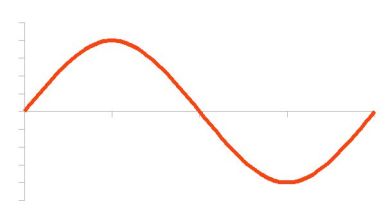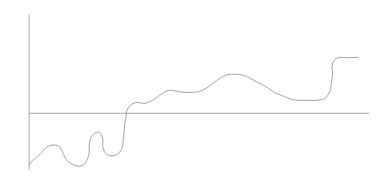Alternating current (AC)
Alternating current (AC) is a specific example of a periodically alternating current. The current value crosses zero, alternating between positive and negative values. The interval of time between the attainment of a definite value on two successive cycles is called the period, thus alternating current is often referred to as the periodic current. The usual waveform is a sine wave (Fig. 1). |
Fig. 1. The graph of a single alternating voltage curve |
General parameters defining the alternating current: period, frequency (in Hz) and amplitude. The alternating current is used in mains globally for powering devices marked with an AC or sine wave symbol. Voltage and frequency may vary by country (e.g. 110 V at 60 Hz in the US), however, it is still the periodic alternating current. |
While the mains current is often referred to as “variable”, it is not synonymous with the alternating current. The alternating current changes both its direction and amplitude in time, while the variable current refers to any type of current that changes not only periodically, but also randomly. Variable current can be positive only. |
Variable current includes a pulsating current (Fig. 2) and an aperiodic current (Fig. 3). |
Fig. 2. Periodically variable pulsating current |
Fig. 3. Aperiodic variable current |
The alternating current can be used to directly supply incandescent light bulbs, AC motors or various power supplies. The power supplies convert alternating current into direct current to power all the other electronic devices. |








